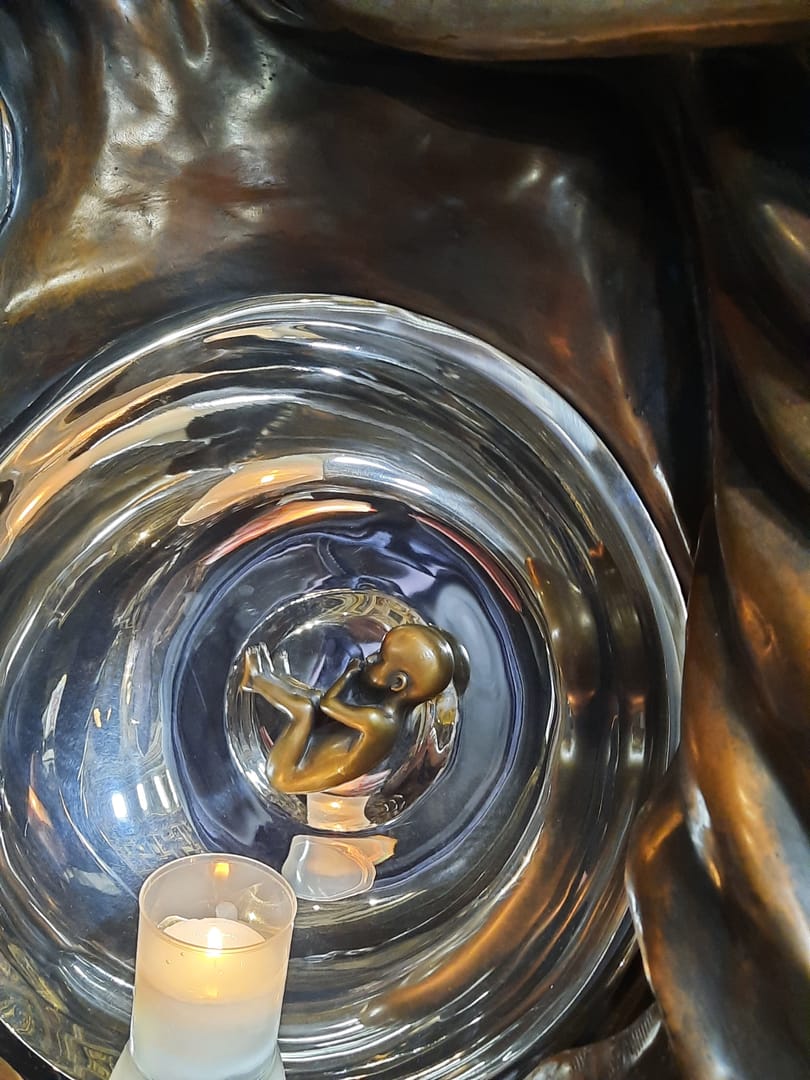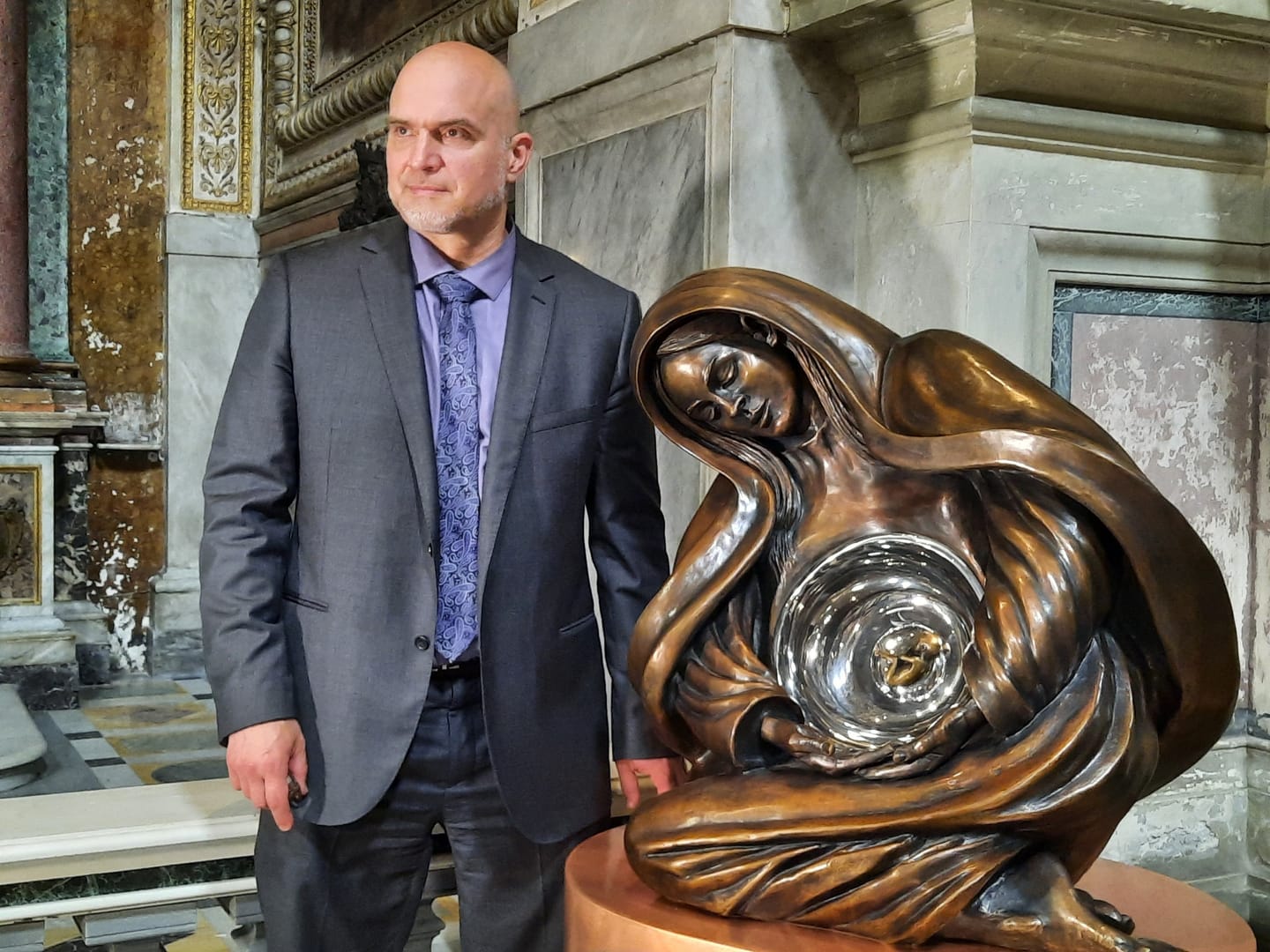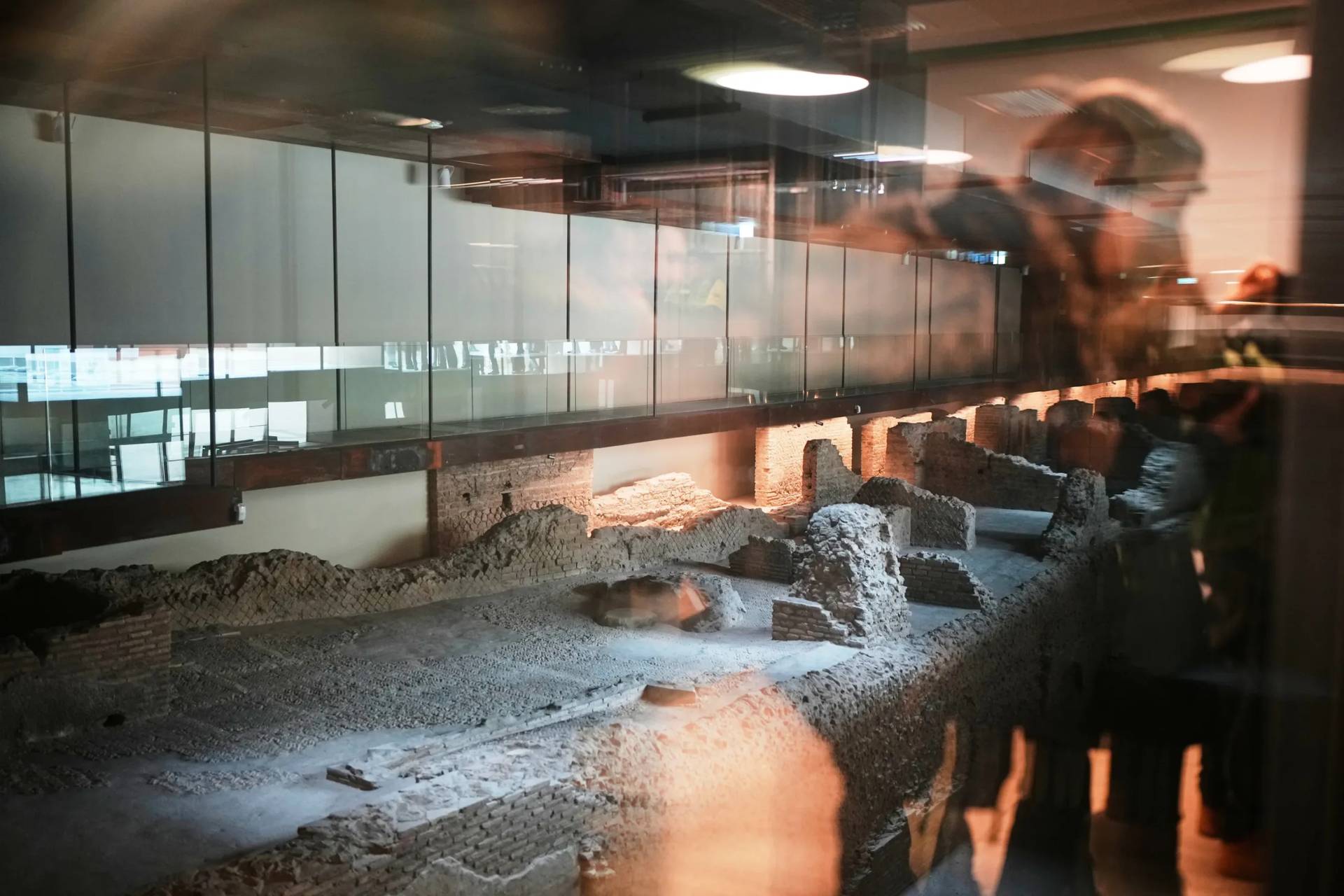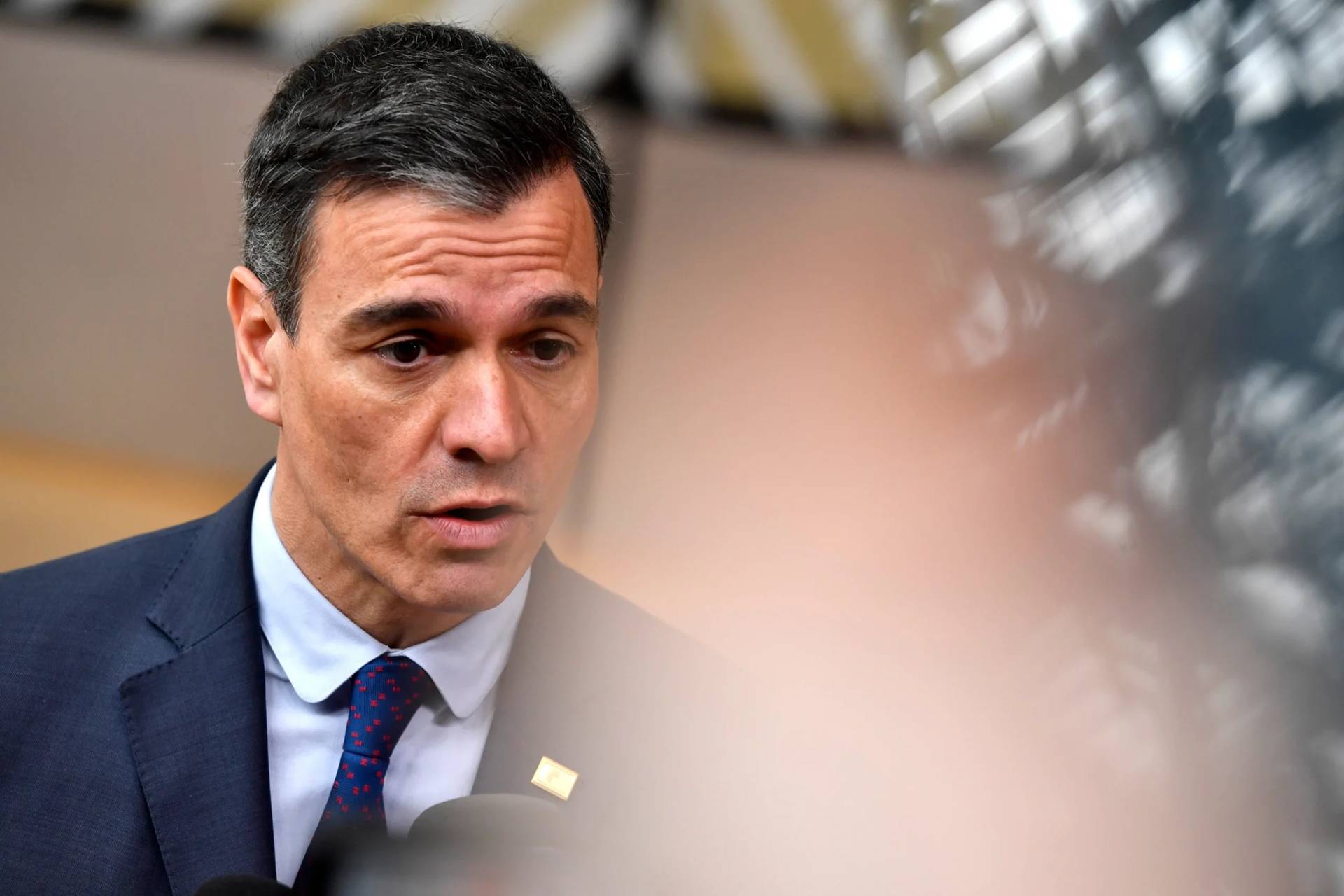ROME – Canadian sculptor Tim Schmalz made history in 2019 when his bronze statue depicting migrants and refugees in a boat, titled “Angels Unawares,” was installed in St. Peter’s Square, the first artistic addition to the fabled space in centuries. On Sunday, a more modest but equally timely work by Schmalz, this one celebrating unborn life, will be blessed in one of Rome’s most famous churches.
“Life Monument” depicts a Madonna with an unborn Jesus. The sculpture has been donated to the Roman church of San Marcello al Corso, located on one of the city’s most visited streets.
“[I’m] very excited to have the Eternal City having the representation of an unborn Jesus,” the artist told a handful of journalists Friday. “This is the city with the most images of Jesus in the world, and as one cardinal said to me, ‘If something comes to Rome, it comes to the world.’ I think it is very exciting to have a representation of the sacredness of all lives here.”

 Canadian sculptor Timothy Schmalz poses before speaking to reporters in Rome May 27, 2022, to present the installation of his latest piece, “Life Monument,” a bronze and steel sculpture of Mary and the unborn Jesus in her womb. (Credit: CNS photos/Carol Glatz)
Canadian sculptor Timothy Schmalz poses before speaking to reporters in Rome May 27, 2022, to present the installation of his latest piece, “Life Monument,” a bronze and steel sculpture of Mary and the unborn Jesus in her womb. (Credit: CNS photos/Carol Glatz)Schmalz described it as “providential” that the installation of the statue comes just as the Supreme Court of the U.S. may be poised to reverse the 1973 Roe v. Wade decision that legalized abortion in America.
Yet Schmalz insists he wants the new statue to be an expression of the beauty of life, not a confrontational political statement.
“I really believe that artwork can be used as a celebration and a persuasion,” he said. “As I was working on it, I said, ‘I don’t want to preach to the choir; I don’t want a pro-life sculpture that will offend anyone.’ This is a sculpture for those who are more cynical about the value, the beauty, of human life.”
“If I can move that dialogue to some understanding, the sculpture is a great tool,” Schmalz said.
He added that having it placed in such a “sacred” place in Rome adds another layer. When the city’s masterpieces were created, “abortion wasn’t on the agenda, most didn’t even understand what happened in a woman’s stomach. I don’t think it’s ironic that only now do we have a pregnant Madonna with the representation of Jesus as a fetus.”
Schmalz has at least two other sculptures in Rome: “Homeless Jesus,” on a bench by the Santo Spirito hospital, and “Angels Unaware” in St. Peter’s Square.
With “Life Monument” and another statue depicting the elderly he hopes to start working on soon, he will have covered the entire arc of the pro-life movement, which sees every life, at all stages, as sacred.
“As a culture, we cannot change the idea that all human life is sacred,” Schmalz said. “Because when the few in our society lose our humanity, we all lose it.”
He noted that Rome has two massive architectural structures: St. Peter’s Basilica and the Coliseum. They say that all roads lead to Rome, he said, but in Rome, all roads lead to the Coliseum: “And what happened there? Butchering, murder. And that is pre-Christian times. And then you have St. Peter’s, a different world.”
“I fear that if Christianity is in danger because our mainstream culture smudges it down, our values that are attached to Christianity are going to be even more minimalized, or even forgotten,” Schmalz said. “What I see in our culture is we are saying, ‘We are significant enough, we are educated enough, we don’t need Christianity.’ But what I think is really happening is that we are reverting back to our pre-pagan roots: My ancestors are German. Before Christianity came into Germanic tribes, human sacrifice was common, so it doesn’t take that much imagination to realize that some of the destructive forces that are going on in our culture resemble that religion.”
“We saw it in Rome too: The most advanced civilization in the West had the Coliseum.” Society, he insisted, cannot lose the knowledge of the sacredness of life that starts with conception and carries through to old age, with everyone in between.
“If art can play a role in helping society realize the importance of life, I can’t think of a better use for it, instead of it just being art for art’s sake,” Schmalz said.
Every element of the sculpture is thought of as a representation of beauty: Of Mary, of the womb made in mirrored steel, the texture in her clothes, all lead to that little unborn Jesus, he said.
The image, Schmalz said, was partially inspired by French Archbishop Christophe Pierre, the papal representative to the United States, who, when blessing one of the artist’ sculptures in Washington, D.C. in the Bible Museum, quoted Dostoyevsky: “Beauty can save the world.”
“I thought that was a very lofty idea,” Schmalz said. “But I went to my studio and continued thinking about it. If beauty can save the world, then maybe it can also save the unborn.”
People, he said, are impacted by what they see, and as such, more pro-life sculptures celebrating pregnancy can be powerfully inspiring.
“People don’t see what is inside the womb very often, and if they do, it is usually in a postcard handed to them on the street, that they dispose of. Or it’s something concerned with the horror of [abortion]. Yet this sculpture is nothing but a celebration. And it is permanent; bronze sculptures last forever.”
The sculpture placed in the Roman church will be blessed this Sunday by Archbishop Vincenzo Paglia, head of the Vatican’s pro-life office. It was donated to the Movimento Per la Vita Italiano, the Italian pro-life movement, with whom Schmalz got into contact with the help of America’s Heartbeat International.
He has created various sizes of the same sculpture, which will be placed in Washington’s Theological College, across from the National Shrine; in Austin, Texas; and in Ireland, but Schmalz hopes other places will take it too.
Baptized a Catholic, but only active in the faith since the age of 17, Schmalz said that when he first set out to do a pro-life sculpture, he began by depicting Jesus crying with his face in his hands, surrounded by 490 aborted fetuses. The idea was to portray God’s forgiveness “70 times seven,” which comes to 490.
In the end he abandoned that idea, he said, “because it’s too sad. I can’t see anyone angry at [the new statue], and hopefully, they will be moved in a positive way by it. Maybe some hearts will be changed by it.”
Follow Inés San Martín on Twitter: @inesanma
















